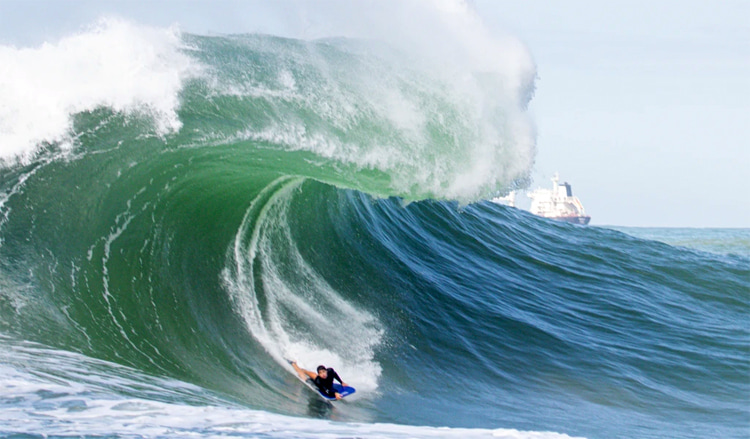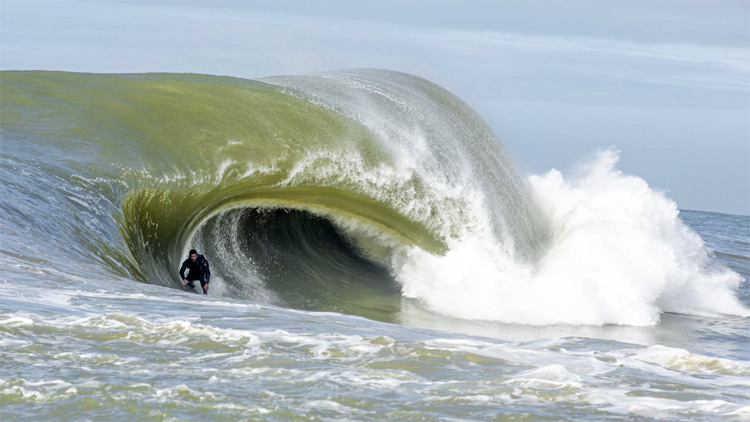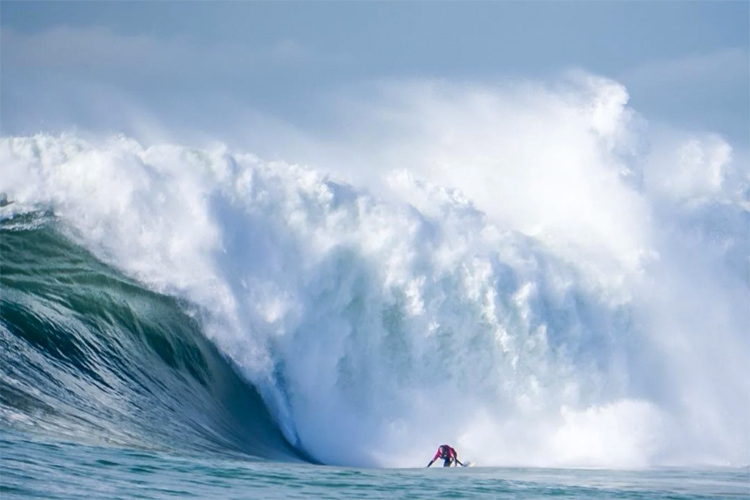Avalanche is a deep water slab located 2.6 miles (4.2 kilometers) off the coast of Vila Velha, a coastal town in the state of Espírito Santo, Brazil.
The name speaks for itself.
But in this particular case, it's not a mass of snow, ice, or rocks falling rapidly down a mountainside - it's seawater.
Avalanche is an advanced surfing wave - for professionals only - that can be paddled into or might require jet ski assistance.
Its ultra-thick lip produces a thunderous roar as it explodes down the line.
The brutal wave is wider than it is tall, and it certainly is one of the heaviest waves in Brazil, a country best known for its beach breaks.
The right-hand Brazilian beast reminds us of Australia's Shipstern Bluff, Ours, Cyclops, and The Right or Tahiti's Teahupoo on heavy and death-defying days (in reverse).

Discovered by Bodyboarders
At its shallowest point, Avalanche is 12 feet deep.
It is also a highly sensitive wave - a surfer should never feel comfortable inside the barrel because that's exactly when wipeouts occur.
Sometimes, a good-looking wave could very well close out abruptly or generate an unmakeable section ahead.
The mutant slab was discovered and first ridden by the local NXF bodyboarding team.
It's a monstrous, bone-crushing wall of fast-moving water that can appear on the horizon from Vila Velha whenever the best swell and light wind conditions align.
The wave comes to life when open water, east-southeast (ESE), and long-period swells hit the nearby underwater rock shelf and submerged mountain chain.
Suddenly, and only once in a while, a massive wall of water emerges near Ilha dos Pacotes, reaching heights of 32 feet (10 meters).
Avalanche is often ridden by stand-up surfers, bodyboarders, and even skimboarders. However, when it gets life-threatening, tow-in is the only rational option.

Magnetic Yet Unpredictable
Due to its specific characteristics, bodyboarders can usually drop into the biggest and steepest waves and get deeper inside the green cylinder.
However, the take-off point is never obvious and exact, resulting in rides with unpredictable outcomes.
Laje da Avalanche breaks 280 miles (440 kilometers) northeast of Rio de Janeiro, but distance is no longer an issue for slab hunters from the "Marvellous City."
It is usually worth the eight-hour drive.
The water temperature ranges from 70-75 °F (21-24 °C), and an inflatable life vest is highly recommended.
Avalanche is one of the heaviest waves in America and certainly one of the most challenging slabs on the planet.
Despite its inconsistency, it has already delivered epic sessions that stack up with similar waves across the world, especially between March and September.
With the right conditions, Avalanche can be pumping unprecedented waves for four consecutive days.
